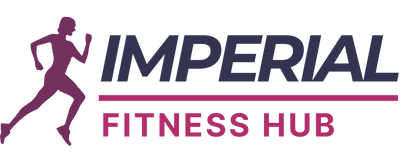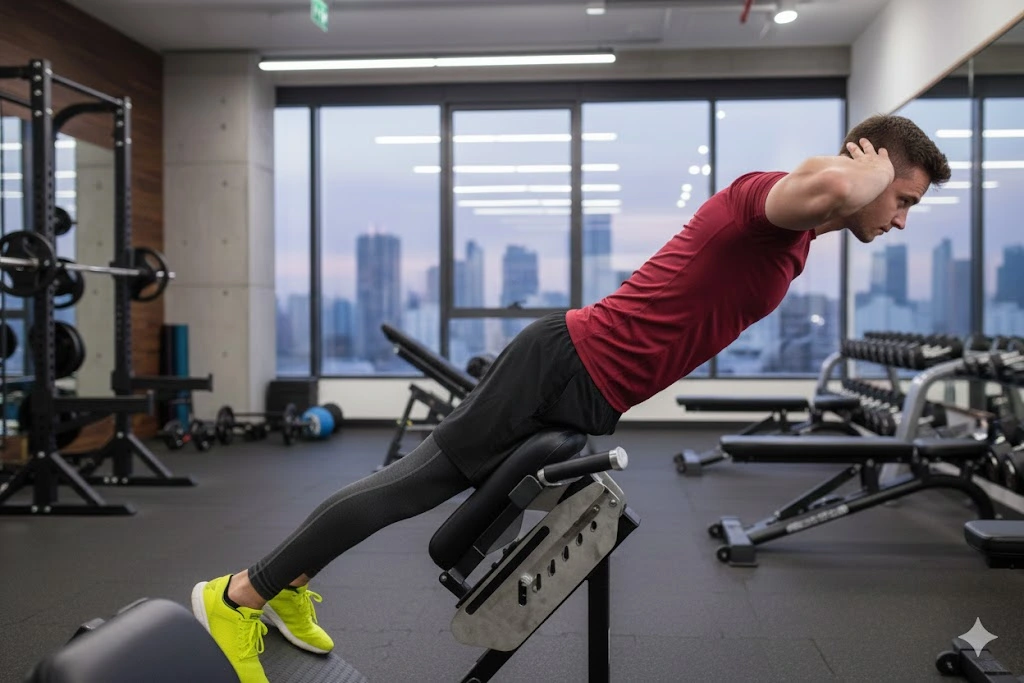Introduction
Patellar tendonitis exercises, often referred to as jumper’s knee, is a painful and limiting condition that affects the tendon connecting your kneecap to your shinbone. It’s common among athletes in high-impact sports such as basketball, volleyball, or running, but it can also develop in anyone who places repeated strain on their knees. The result is sharp pain, stiffness, and swelling that can make everyday movements, like climbing stairs or standing up from a chair, difficult. That’s where targeted patellar tendonitis exercises become essential, as they help restore strength and flexibility to the affected tendon.
The good news is that recovery is possible with consistency and the right strategy. Instead of completely resting the knee, carefully designed patellar tendonitis exercises encourage healing by promoting blood flow and rebuilding muscle balance. These movements strengthen the quadriceps, hamstrings, and calves, reducing pressure on the tendon and improving knee stability. Whether you’re an athlete or someone managing daily knee discomfort, including the right patellar tendonitis exercises in your routine can make a dramatic difference in recovery speed and long-term joint health.
In this complete guide, you’ll discover everything you need to know about patellar tendonitis exercises, from simple home workouts for beginners to advanced gym-based strengthening and plyometric drills for athletes. You’ll also learn which exercises to avoid, how to progress safely through different rehab phases, and what additional recovery strategies, such as stretching and mobility work, can help you heal faster and get back to doing what you love without pain.
Table of Contents
What is Patellar Tendonitis Exercise (Patellar Tendinopathy)?
Patellar tendonitis exercise, often called jumper’s knee, is an overuse injury that causes pain in the tendon just below the kneecap. This tendon connects the quadriceps muscles to the shinbone, and when it becomes irritated, even simple activities like squatting, running, or jumping can trigger discomfort. The condition is especially common in athletes who perform repetitive movements, but anyone can experience it. Early treatment with targeted patellar tendonitis exercises can make a big difference in pain relief and recovery.
Repetitive stress and weak supporting muscles are key causes of this condition. Sports like basketball, volleyball, and track running place constant strain on the knee, leading to tiny tendon tears over time. Consistent and properly guided patellar tendonitis exercises help strengthen the muscles around the knee, improve flexibility, and prevent further damage.
You may also hear doctors refer to the issue as patellar tendinopathy. While tendonitis implies inflammation, tendinopathy includes both inflammation and tendon degeneration. Regardless of the term, recovery depends heavily on gentle, progressive patellar tendonitis exercises that promote healing and restore full knee function.
The main symptoms include:
- Pain and tenderness at the lower part of the kneecap (inferior pole).
- Swelling or a thickened feeling around the tendon.
- Pain when climbing stairs, squatting, or landing from a jump.
- Stiffness after sitting or resting for long periods.
Do I Have It? Quick Self-Checks & When to See a Doctor
If you suspect patellar tendonitis exercise, a few simple checks can give you a clearer idea. The most common self-test is pressing on the tendon just below your kneecap. If you feel sharp pain or tenderness there, it’s often a strong indicator of jumper’s knee. Another test is the single-leg decline squat, standing on a decline board or slope and slowly lowering yourself on one leg. If this movement triggers familiar knee pain, it may confirm the presence of patellar tendon problems.
However, not all knee pain is patellar tendonitis exercise. There are some red flags you should not ignore. If your knee locks, gives way suddenly, swells significantly, becomes hot and red, or if you hear a popping sound during an injury, these may suggest something more serious, such as ligament or cartilage damage. In such cases, you should see a doctor immediately.
Sometimes, imaging tests are needed to rule out other knee issues. An X-ray can help identify bone-related problems, while an ultrasound or MRI can reveal tendon tears or structural changes. However, in most cases, a detailed physical examination and medical history are enough to diagnose the condition and guide a safe plan for patellar tendonitis exercises.
During recovery, one helpful approach is the pain-monitoring model. This method helps determine how much discomfort is acceptable while doing patellar tendonitis exercises. Generally, it’s safe to continue exercising if your pain level stays around 3 out of 10 and doesn’t worsen the next day.
If pain persists, becomes sharper, or starts affecting your daily routine, it’s important to pause your patellar tendonitis exercises and seek advice from a physiotherapist or doctor to adjust your rehab plan safely.
Benefits of Patellar Tendonitis Exercises
When you’re dealing with patellar tendonitis, it can be tempting to stop moving altogether. But complete rest often makes the problem worse over time. Targeted exercises are one of the most effective ways to reduce pain, strengthen the tendon, and return to normal activity safely.
The main benefits include:
- Pain Reduction and Inflammation Control
Gentle isometric and stretching exercises can reduce knee pain by improving blood flow and calming the irritated tendon. Over time, consistent movement helps reduce stiffness and swelling. - Improved Knee Strength and Flexibility
By strengthening the quadriceps, hamstrings, calves, and hip muscles, you take pressure off the patellar tendon. This balance of strength and flexibility allows the knee joint to function more smoothly. Many of these moves are similar to bodyweight exercises that improve balance and strength without equipment. - Prevention of Reinjury
Once you recover, continuing with the right exercise program helps prevent tendonitis from coming back. Stronger muscles and proper loading techniques make your knees more resilient to sports and daily activities. - Better Overall Performance
For athletes, structured rehab not only helps in recovery but also improves performance. Stronger legs, better landing mechanics, and proper warm-ups reduce the risk of future injuries while enhancing speed and agility.
In short, patellar tendonitis exercises are not just about healing—they are about building long-term knee health.
Rehab Principles That Actually Work
Recovering from patellar tendonitis isn’t just about doing random exercises, it’s about following proven Patellar Tendonitis Exercises with the right load, rest, and progression ensures safe tendon healing.. The right balance of load, rest, and progression makes all the difference.
Load Management
One of the biggest mistakes is complete rest. While cutting back on painful activities is necessary, you should avoid stopping movement altogether. Instead, reduce the frequency of high-impact actions like running and jumping, while keeping some low-impact activity to maintain circulation and strength.
Phased Loading Approach
Research shows that tendon rehab works best when exercises are progressed in stages:
- Isometrics for pain relief and activation.
- Eccentric exercises like decline squats to build tendon tolerance.
- Heavy Slow Resistance (HSR) training for strength and tendon remodeling.
- Plyometrics for explosive power and safe return to sport.
Criteria-Based Progression
Instead of following a fixed timeline, you should progress only when your body is ready. Pain levels, next-day soreness, and functional ability are better indicators than the calendar. Many physiotherapists use the VISA-P score (a questionnaire for patellar tendon health) to track progress.
Supporting Methods (Adjuncts)
While exercises are the foundation, other methods can help:
- Patellar straps or taping for short-term pain relief.
- Stretching of quads, hamstrings, and calves for flexibility.
- Hip and glute strengthening to improve overall knee mechanics.
Following these principles ensures that your rehab is structured, safe, and effective — giving your tendon the time and load it needs to heal.
Phase 1 — Pain Relief & Isometrics (Week 0–2)
The first step of Patellar Tendonitis Exercises is pain relief through controlled isometrics. To make the most of these exercises, fueling up with the right pre-workout meal can enhance energy and recovery.
Goals of Phase 1:
- Reduce knee pain and irritation.
- Maintain some muscle activity to prevent weakness.
- Build tolerance for future strengthening.
Key Exercises:
- Isometric Knee Extension / Spanish Squat: Hold a squat position with your back supported against a wall or strap behind your knees. Aim for 5 sets of 45-second holds, resting 2–3 minutes between sets. Do this once or twice per day.
- Quad Sets: Sit with your leg straight, tighten your thigh muscles, and press the back of your knee down into a towel. Hold for 5–10 seconds, repeat 10–15 times.
- Straight-Leg Raises: Lie down, keep one leg bent and the other straight, then lift the straight leg to knee height. Perform 3 sets of 10–15 reps.
- Basic Stretches: Gentle stretching for quads, hamstrings, and calves (hold 30 seconds, 3–5 times).
- Hip & Glute Work: Side-lying leg raises or clamshells, 3 sets of 10.
Progression Gate:
You’re ready to move on when your pain stays at or below 3 out of 10 during exercises, and any soreness resolves within 24 hours.
Phase 2, Eccentric Loading & Strength Foundation (Week 2–6)
Once your pain is under control and you can tolerate isometric holds without significant discomfort, the next step is eccentric training. This phase strengthens the tendon by gradually loading it under tension, which is one of the most effective ways to stimulate healing.
Core Exercise (Evidence-Based):
- Single-Leg Decline Squat: Stand on a 15–30° decline board, lower yourself slowly on one leg to about 60° of knee bend, then use the opposite leg or both legs to return to the starting position.
- Perform 3 sets of 15 reps, once or twice per day.
- Keep the tempo slow and controlled, aiming for mild pain (1–5 out of 10 is acceptable).
- As you improve, add light weights or a vest for progression.
Accessory Strength Exercises:
- Step-Ups and Step-Downs to build quadriceps and balance.
- Terminal Knee Extensions (with band resistance) to strengthen the end range.
- Wall Sits for endurance.
- Hamstring Curls (band or machine) to balance the knee joint.
- Stationary Cycling at low resistance to improve blood flow and maintain cardiovascular fitness.
Progression Gate:
You’re ready for the next phase when you can perform eccentric exercises with minimal pain (≤3/10) and recover without next-day soreness. Improved tolerance to single-leg squats is a clear sign of progress. If you’re training at home, try incorporating chair exercises for belly fat alongside rehab to improve mobility and burn calories safely without stressing the tendons.
This phase builds the foundation for more advanced strength work, setting you up for long-term recovery and resilience.
Phase 3, Heavy Slow Resistance (HSR) Training (Week 4–10)
By this stage, your tendon is ready for heavier and slower strength training. The goal now is to remodel the tendon, increase muscle strength, and prepare your body for explosive activities later.
Core Lifts (3 times per week):
- Back or Box Squats: Perform at a pain-free depth, focusing on slow control.
- Leg Press: Moderate to heavy weight, slow 3-second descent, controlled push up.
- Hack Squats or Machine Squats: Good for progressive load with stability.
- Reps & Sets: 3–4 sets of 6–8 reps at a moderate-heavy intensity (RPE 7–8).
Single-Leg Variations:
- Bulgarian split squats or step-downs can be introduced once pain is manageable.
- These help improve balance and correct strength differences between legs.
Maintaining Eccentrics:
- Continue decline squats 2–4 times per week as supportive tendon training.
Hip & Core Conditioning:
- Strengthen hips with hip extensions, abductions, and glute-focused work.
- Add trunk stability exercises like planks to support overall mechanics.
Monitoring Progress:
- Keep pain during and after training at ≤3/10.
- Track your VISA-P score and ensure it’s improving.
- Adjust weights and intensity gradually based on tolerance.
This phase is where your tendon gets stronger, your muscles rebuild, and your knees start feeling much more stable. It bridges the gap between controlled rehab and real-world athletic performance. These compound lifts are also central to most gym workouts for women to lose weight or men, which makes this phase a foundation for both recovery and fitness.
Phase 4, Plyometrics & Return-to-Sport (Week 8–12+)
The final stage of rehab prepares you for explosive movements and sport-specific demands. By now, your tendon should be stronger, pain levels controlled, and you’re ready to reintroduce jumping and running safely.
Before returning to sports, hop tests and VISA-P scoring are recommended by physiotherapists worldwide (Physiopedia).
Landing Strategy & Progression:
- Focus on soft landings with more knee and hip flexion, avoiding stiff landings that stress the tendon.
- Progress through a ladder of plyometrics:
- Pogo jumps (small, quick hops).
- Submaximal hops on two legs.
- Box jumps with controlled landings.
- Approach jumps, sprints, and cutting drills.
- Full sport-specific training at higher intensity.
Return-to-Run & Jump Milestones:
- Pain should be ≤2/10 during and after drills.
- Hop test symmetry between legs should be at least 90–95%.
- VISA-P score should be above 90 before resuming full competition.
Load Management:
- Plan training with high, medium, and low load days.
- Increase volume before intensity to let the tendon adapt.
- Keep monitoring pain and next-day soreness as you add explosive work.
This phase closes the rehab journey by restoring athletic power, agility, and confidence. Done correctly, it not only helps you return to sport but also reduces the risk of reinjury.
At-Home & Gym Exercise Routines
One of the best parts of patellar tendonitis rehab is that you can mix both home-based exercises and gym-based training depending on your access to equipment. This flexibility allows you to stay consistent no matter where you are.
At-Home Routine:
- Bodyweight Squats: Keep them shallow in the early stages and progress to deeper squats as tolerated.
- Step-Ups: Use a sturdy chair or step, focusing on slow control during both the upward and downward phases.
- Foam Rolling: Gently roll quads, hamstrings, and calves to reduce tightness.
- Yoga Stretches: Incorporate hamstring, calf, and hip flexor stretches for mobility.
- Spanish Squat with a Strap or Band: Excellent for pain relief and quad activation if you don’t have gym access.
Gym Routine:
- Leg Press (Light to Moderate Load): Perform with controlled tempo, avoiding painful depth.
- Resistance Band Work: Terminal knee extensions, hip abductions, and glute activation drills.
- Stationary Bike: Low resistance cycling improves circulation and provides safe cardio.
- Heavy Slow Resistance Lifts: Squats, hack squats, or leg press for tendon remodeling during Phase 3.
Exercises to Avoid (By Phase)
Not all exercises are safe during patellar tendonitis rehab. Some movements put too much stress on the tendon too early, and performing them without proper progression can delay recovery. Knowing what to avoid is just as important as knowing what to do.
Early Phase (Weeks 0–2):
- Deep Squats under Load: Excessive knee flexion can irritate the tendon.
- Jumping or Plyometrics: High-impact activities worsen pain and slow healing.
- Leg Extension Machine: Especially in the painful early range, it can overload the tendon.
- Stair-Stepper or Hill Running: Too much repetitive stress.
Mid Phase (Weeks 2–6+):
- Some of the above can be reintroduced slowly, but only if pain stays within safe limits (≤3/10).
- Depth and load should be progressed gradually.
Late Phase (Weeks 8–12+):
- High-load, sport-specific jumps and sprints should only be performed once you’ve met rehab milestones — such as hop symmetry ≥90% and VISA-P >90.
- Avoid rushing back into explosive training before your tendon is fully prepared.
By phasing exercises properly and respecting your pain limits, you can return to full activity without setbacks.
FAQs(Frequently Asked Question)
Q1. How long until I’m pain-free?
Recovery differs for everyone. Many improve within a few weeks, but full return to sports may take 2–3 months. Consistency with rehab exercises is the key.
Q2. Can I train with some pain?
Yes, if the pain is mild (around 3/10 or less) and doesn’t increase the next day. This is part of the pain-monitoring approach used in tendon rehab.
Q3. Is cycling safe with patellar tendonitis?
Yes, especially at low resistance. Just like cycling, other low-impact routines, such as abs workout gym routines, can keep you active without overstressing your knees.
Q4. Are leg extensions bad for tendonitis?
At the start, yes—they overload the tendon. Later, once pain is under control, you can reintroduce them slowly with controlled movements.
Q5. Do I need imaging for diagnosis?
Mostly no. A physical exam is enough. MRI or ultrasound is only needed if symptoms don’t improve with rehab or if severe signs (swelling, instability, sharp pain) appear.
Conclusion
Recovering from patellar tendonitis takes patience and structured progression. From early isometrics to plyometrics and strength training, every step builds tendon resilience. Supporting your workouts with the right protein powders, gym gear, and balanced nutrition ensures faster recovery and long-term results.
The key is not to rush. Monitor your pain, respect your limits, and only progress when your body is ready. Combining rehab with supportive methods like stretching, foam rolling, or short-term use of a patellar strap can further enhance recovery. Consistency with Patellar Tendonitis Exercises is the foundation of recovery and long-term knee health.
Most importantly, remember that every knee heals differently. While exercises are powerful tools, you should consult a physiotherapist if your pain persists beyond several weeks, if swelling increases, or if your daily function is limited. Professional guidance can fine-tune your program and prevent setbacks.





